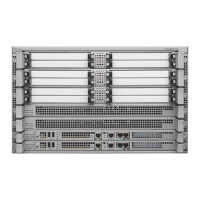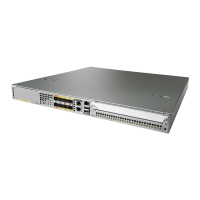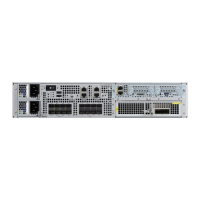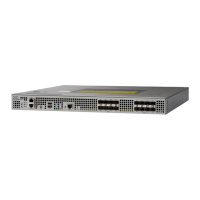Keepalive set (10 sec)
Last input never, output never, output hang never
Last clearing of "show interface" counters never
Input queue: 0/75/0/0 (size/max/drops/flushes); Total output drops: 0
Queueing strategy: fifo
Output queue: 0/40 (size/max)
5 minute input rate 0 bits/sec, 0 packets/sec
5 minute output rate 0 bits/sec, 0 packets/sec
0 packets input, 0 bytes, 0 no buffer
Received 0 broadcasts (0 IP multicast)
0 runts, 0 giants, 0 throttles
0 parity
0 input errors, 0 CRC, 0 frame, 0 overrun, 0 ignored, 0 abort
0 packets output, 0 bytes, 0 underruns
0 output errors, 0 applique, 2 interface resets
0 output buffer failures, 0 output buffers swapped out
1 carrier transitions alarm present
DSU mode 0, bandwidth 44210 Kbit, scramble 0, VC 0
The following example shows the output for a serial interface for the first T1 on a channelized T3:
Router# show interface serial2/0/1/1:0
serial2/0/1/1:0 is administratively down, line protocol is down
Hardware is SPA-4XCT3/DS0
MTU 1500 bytes, BW 832 Kbit, DLY 20000 usec,
reliability 255/255, txload 1/255, rxload 1/255
Encapsulation HDLC, crc 16, loopback not set
Keepalive set (10 sec)
Last input never, output never, output hang never
Last clearing of "show interface" counters never
Input queue: 0/75/0/0 (size/max/drops/flushes); Total output drops: 0
Queueing strategy: fifo
Output queue: 0/40 (size/max)
5 minute input rate 0 bits/sec, 0 packets/sec
5 minute output rate 0 bits/sec, 0 packets/sec
0 packets input, 0 bytes, 0 no buffer
Received 0 broadcasts (0 IP multicast)
0 runts, 0 giants, 0 throttles
0 input errors, 0 CRC, 0 frame, 0 overrun, 0 ignored, 0 abort
0 packets output, 0 bytes, 0 underruns
0 output errors, 0 collisions, 1 interface resets
0 output buffer failures, 0 output buffers swapped out
0 carrier transitions alarm present
VC 1: timeslot(s): 2-14, Transmitter delay 0, non-inverted data
Specifying the Interface Address on a SPA
SPA interface ports begin numbering with “0” from left to right. Single-port SPAs use only the port number
0. To configure or monitor SPA interfaces, you need to specify the physical location of the SIP, SPA, and
interface in the CLI. The interface address format is slot/subslot/port, where:
• slot—Specifies the chassis slot number in the Cisco ASR 1000 Series Router where the SIP is installed.
• subslot—Specifies the secondary slot of the SIP where the SPA is installed.
• port—Specifies the number of the individual interface port on a SPA.
The following example shows how to specify the first interface (0) on a SPA installed in the first subslot of
a SIP (0) installed in chassis slot 2:
Router(config)# interface serial 2/0/0
This command shows a serial SPA as a representative example, however the same slot/subslot/port format is
similarly used for other SPAs (such as ATM and POS) and other non-channelized SPAs.
Cisco ASR 1000 Series Aggregation Services Routers SIP and SPA Software Configuration Guide, Cisco IOS
XE Everest 16.5
242 OL-14127-17
Configuring the 2-Port and 4-Port Channelized T3 SPAs
Specifying the Interface Address on a SPA
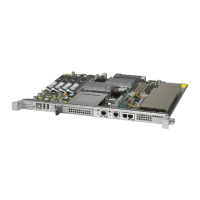
